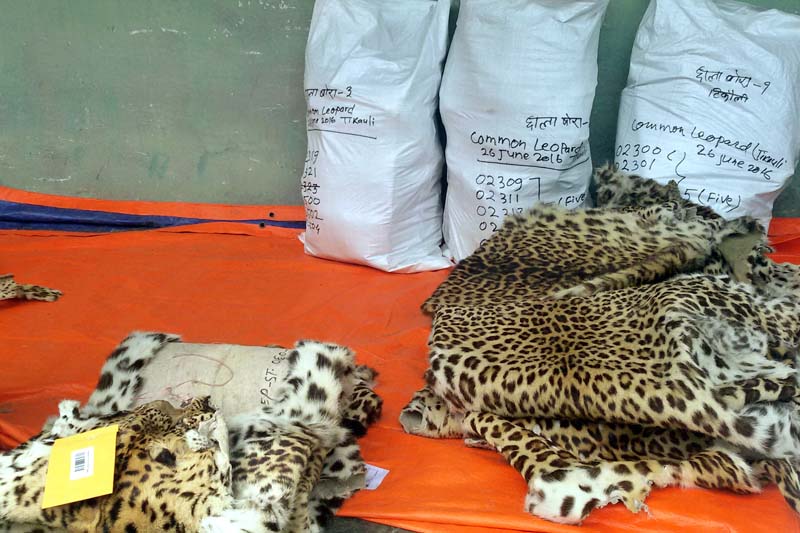Wild animal parts bar-coded
Chitwan, July 5
Sample collection and bar-coding of the body parts of wild animals, which were kept at Chitwan National Park, Kasara and Armed Forest Guard Training Centre, Tikauli, have been completed.
A team deployed from the Nepali Army, Department of National Park, Department of Forest, Central Investigation Bureau of Nepal Police, Laboratory of Science and Technology, Natural Conservation, Swoyambhu, National Natural Conservation Fund and technicians of US Fish and Wildlife Service completed the task in around 11 days.
Chief Conservation Officer at CNP, Ram Chandra Kandel, said the team had taken samples of each body part of dead wild animals and kept them safely. He said the parts can be recognised in future on the basis of the bar-coded chips.
Kandel said small body parts of animals were kept safely to carry out study, research, investigation and DNA test, among others, in future. “Smaller body parts like horn and bones as well as small pieces of skin have been kept as samples,” Kandel informed.
Similarly, five horns of the one-horned rhino have been kept separately to identify and study about the animal. Important body parts of wild animals have been kept safely after bar-coding them. The team is now preparing to submit its report.
Earlier, the government used to destroy the body parts of wild animals after burning them. The government has been preparing to destroy some body parts this time as well.
The body parts of rare wild animals like horns of the one-horned rhino, skin of spotted tiger and tusk of wild elephants, among others, have been stored. As many as 369 rhino horns, 69 pieces of skin of the spotted tiger, 493 pieces of leopard hide, 185 wild elephant tusks and 52 claws and 45 gall bladders of bears, among others, have been stored safely.
As many as 253 pieces of rhino horn have been kept in Kasara while 116 have been kept in Tikauli.






